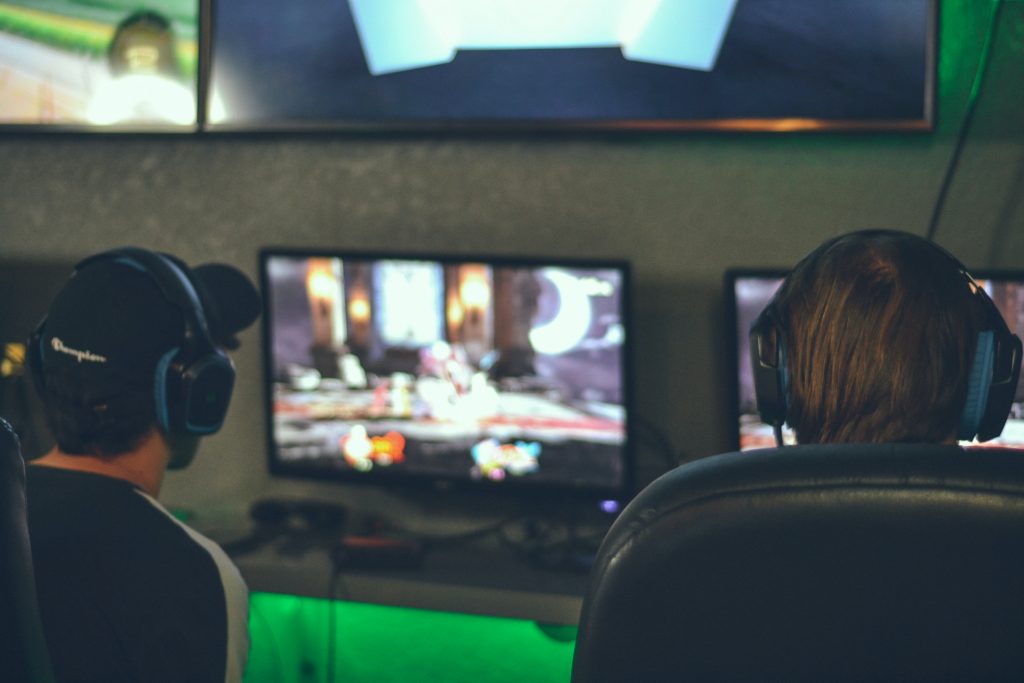According to parents, the ideal video game is educational, provides small life lessons, strengthens hand-eye coordination, and keeps kids entertained for about 30 minutes at a time. However, listening to children, it turns out that educational qualities are far below the need for speed, action, cool movements and excellent weapons. It is hard to believe that there are games that meet the requirements of both parents and children.
Parents should always find time to play games with their children; the only problem with using this approach to choosing video games is that the game is already in the house and the money has been spent. Open games rarely come back, and once they’re in the house and in their hot little hands, kids won’t let go of games without a lot of arguing, complaining, and upsetting. So making an informed decision before bringing games home is a must!
So how does a parent choose a video game for kids? Reading the back cover is unlikely to reveal much, while the internet hype can be so unapproachably filled with insider jargon that it’s hard to know if a game is appropriate, too violent, or perhaps even contains content that is objectionable.
At the same time, just because a game is very popular and the evening news shows long lines of customers waiting outside stores for them to go on sale doesn’t mean it offers the type of game a parent wants to play. house. Luckily, there are five easy steps to choose from.video gamesthat will appeal to both parents and their children. These steps are simple, require a minimum of effort and are quite reliable.
- Check the ESRB rating
The Entertainment Software Rating Board (ESRB) has developed a rating system that ranks game content according to age. Ratings: “EC”, “E”, “E 10+”, “T”, “M”, “AO” and “RP”.
Games marked with the letter “EC” are educational and entertaining for preschoolers and younger students. “E” notes that the games are suitable for all players, and while preschoolers may have more of a learning curve to play the game properly, they do not contain objectionable content. Look out for games rated “E 10+” as these games are for kids over 10 years old. Usually some soft language is included in the game.
This T-rated game is for teens and parents should be aware that violence, sexual innuendo, partial nudity, and swearing are normal. The “M” for adults indicates games for those over 17, and the blood, guts, gore, and sex in these games is legendary. The stakes are higher in games marked “AO” or adults only, as they have an “M” square. An “RP” rating simply means that a rating is pending and parents should refrain from purchasing the game until the rating has been distributed.
- Read the ESRB Content Descriptors
Since preschoolers and elementary schoolers cannot simply be classified into age groups, but should be much more differentiated by their level of maturity, parents would be wise to read the ESRB content descriptions on the back of video game packages. They list potentially objectionable content.
For example, “animated blood” refers to purple, green, or other types of non-realistic blood that may be displayed during gameplay, and the “blood” list is an indicator that realistically depicted blood is part of the gameplay. Children who are very sensitive to blood may not like these games, even if they are designed for their age groups.
- Study the classifications when shopping for products for older children.
Parents who have endured age-appropriate ratings as well as read descriptions can now be overwhelmed by the new classification of what kind of gameplay their kids can expect.
Older kids may enjoy “FPS” (First Person Shooter) games in which they participate in the action from the first person perspective rather than seeing the character they control take action, as is the case with “TPS” (Third Person Shooter). faces). ) games. In addition, some games are classified according to the types of content that provide a storyline, such as vehicle simulation games, strategy games, sports games, and puzzle games.
Shooters are the most brutal, and strategies are the most educational. Puzzles require strategic thinking but don’t offer much of the action that teenagers enjoy.
- Visit the gaming platform manufacturer’s website.
Parents can visit a website for a gadget that will eventually allow kids to play video games. This could be a website for PlayStation, GameCube, Nintendo, Xbox, and multiple sub-platforms. The companies list the video games made for them, their ratings, and most often post trailers, screenshots, and brief descriptions of the game itself.
While such a website does not offer in-depth and unbiased analysis of the game, it is quite a useful tool for getting a good idea of the gameplay and content without relying solely on ratings, back of packaging, or marketing efforts.
- Contact organizations that offer independent game reviews
There are various organizations that are not affiliated with the video game industry that still offer parenting advice. Some groups focus on educational aspects while others are faith-based and view games from that perspective. Find a group that matches your personal criteria and review reviews of the different games you are considering for your kids.
One of the most famous groups is the Entertainment Consumers Association, which provides insight into the industry as well as gaming. Parents who want more information about the games they are considering can visit the forums and websites of such groups and learn from other parents whose children may already be playing these games.
Since these are interactive forums, parents have a unique opportunity to ask other parents questions, and if there is a particular concern about the game, this is the place to get more information.
If all else fails
Of course, if all else fails, there is an old fallback with classic games and characters. Crash Bandicoot, Mario, Spyro, and Pokémon are playable characters that have been around for a long time and in many incarnations. While the educational value of some of these games is debatable, they offer incredible fun, cool moves, and definitely the entertainment value that kids appreciate the most. At the same time, they avoid swearing, nudity, and overt violence that parents object to.
Parents who are short on time, or those who simply can’t find a game that lives up to their standards, usually find a winner in these genres. Moreover, since they are an integral part of the popular series, parents and children can make purchasing decisions together. For example, the popular Mario games offer offshoots such as Luigi’s Mansion which invites you to explore a haunted house, and other offshoots are cart racing games.
The completely different gameplay – but the same hopeful characters and the same level of fit – make this a prime opportunity for parents and kids to agree on a game kids would like to try while avoiding the potentially unwanted games that offer a similar game.



